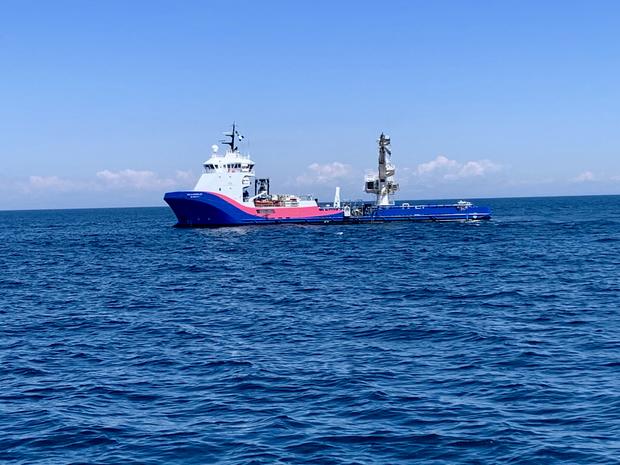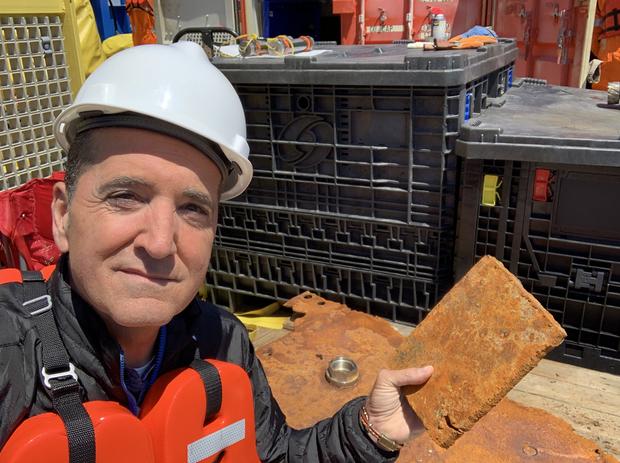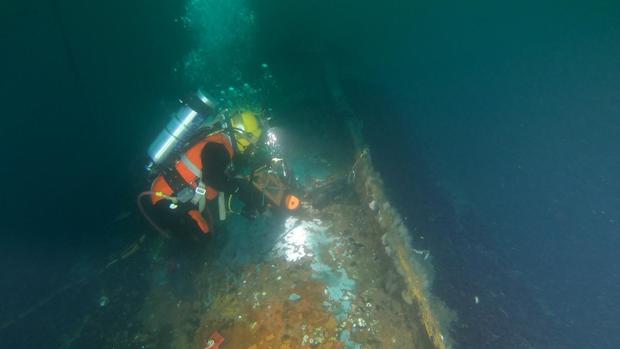WWII Ship Coimbra, Sunk By Nazi U-Boat, Leaking Oil Off Long Island
NEW LONDON, Conn. (CBSNewYork) - Just off the coast of Long Island, there's a mission to stop a dangerous threat to our environment.
It all started right after Pearl Harbor, when Adolph Hitler tried to bring his war machine to New York.
A Nazi U-boat submarine torpedoed a supply ship 27 miles off the southern shore. Now, the sunken WWII cargo ship is starting to leak oil,
PHOTOS: Sunken WWII Oil Tanker Off The Coast Of Long Island
CBS2's Tony Aiello got an exclusive look at the efforts to contain the oil.
From the U.S. Coast Guard Academy in New London, the Coast Guard cutter Sanibel needs three hours to reach the scene, where danger lies 180 feet deep and 77 years distant.
It was January 1942, weeks after Pearl Harbor, Hitler and the Nazis wanted to bring the war to New York, and the East Coast. Hitler dispatched U-boats to our Atlantic waters to torpedo ships supplying our allies in Britain, Aiello reported.
U-123, commanded by Reinhard Hardegen, slipped into New York harbor and saw the lights of Midtown - a moment recreated in a Nazi propaganda film. Then the U-boat headed out to the south shore of Long Island, spotted the oil supply ship Coimbra, and sunk it.
"You think about the wartime effort, and what was going on, what caused this ship to end up on the bottom of the ocean," said Rick Baynor of the U.S. Coast Guard.
That leads to the spot 27 miles south of Hampton Bays, where the intervention ship Shelia Bordelon sits directly above the wreckage of the supply ship Coimbra.
"We come out here do an assessment and we found, yeah, there's a lot of oil. Not only is there a lot of oil, it was starting to leak," said Keith Donohue of the U.S. Coast Guard.
A piece of the shipwreck's hull brought to the surface shows how rusted it is, risking the release of up to 1 million gallons of oil.
"We've been working tirelessly to help declassify this threat. That's a threat for Long Island, the citizens of New York but also many of the industries that make a living out here in the Northeast," said Jessie Diaz of the U.S. Coast Guard.
For weeks, a remote operated vehicle has been monitoring divers as they studied the ship and removed samples of the oil.
"Bunch of stuff down there for them to get tangled in, cause problems," said remote vehicle operator Tom Travis.
The Coimbra is now part of an active marine ecosystem.
"There's mussels, we see bluefish, lots of other life including dogfish," said project manager Aaron Jozsef. "It's teeming with life. It's a great artificial reef."
PHOTOS: Sunken WWII Oil Tanker Off The Coast Of Long Island
It's also the final resting place of 36 crewmen, who were remembered by a moment of silence when work began.
"We made sure to appropriately honor them," Diaz said.
Over the next weeks, thousands of gallons of oil will be removed from the Coimbra. The oily sheen bubbling up from below will vanish, and the Atlantic will once again hide the WWII history, resting down in the deep.
Money for the project comes from a $1 billion oil spill cleanup fund.
One final historical note: The commander of the U-boat that stalked the New York coast in 1942 survived the war, lived to 105, and died just last year.








